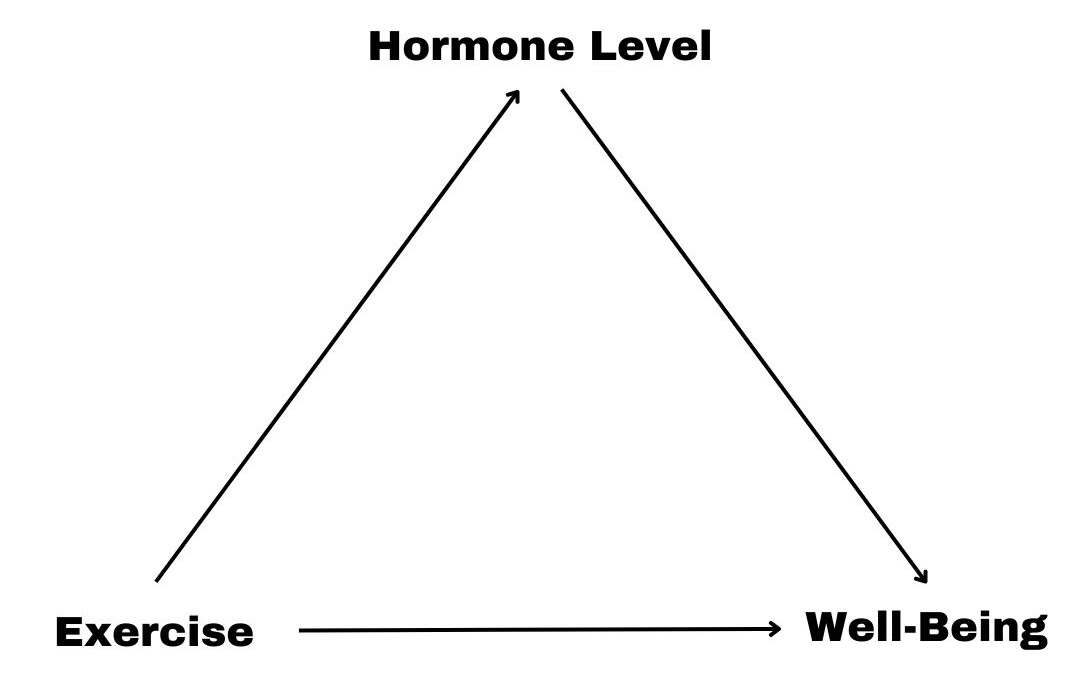Causal Mediation Analysis
Causal inference aims to identify and quantify the causal effect of a treatment on an outcome. In causal mediation analysis, we aim to further explore how this effect arises. Maybe exercise increases the level of a hormone that, in turn, increases well-being. Maybe an import quota increases the market power of local companies which, in turn, increases the prices of goods.
We often visualize relationships like these with a causal diagram, for example,
With the new mediate command, we can estimate the total effect of a treatment on an outcome and decompose it into direct effects and indirect effects (via a mediator such as hormone level). In fact, multiple types of decompositions can be computed, depending on the hypothesis of interest. In addition, estat proportion reports the proportion of the total effect that occurs through the mediator.
mediate is very flexible—the outcome can be continuous, binary, or count; the mediator can be continuous, binary, or count; and the treatment can be binary, multivalued, or continuous. The mediate command supports 24 combinations of models for the outcome and mediator, so it can be applied to many situations that arise in real research.
